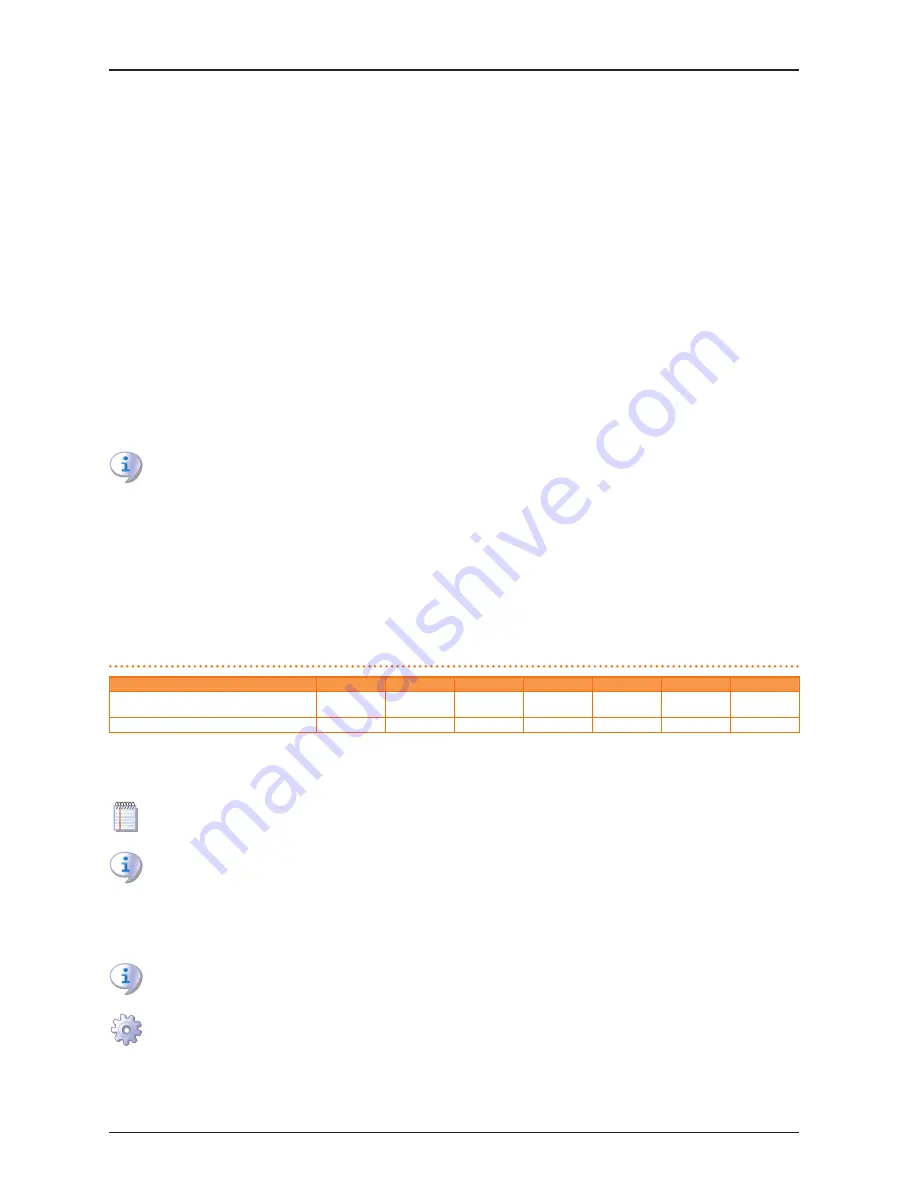
5
HYDRAULIC INSTALLATION
Installation, user and maintenance manual – AY Condensing line, AY Series
25
5�6
FILLING THE SYSTEM CIRCUIT (APPLIANCE)
After having completed all hydraulic, gas and electrical connections, the installer can proceed filling the hydraulic circuit, observing
the following steps:
▶
Activate the automatic air vent valves on the system circuit.
▶
Fill the hydraulic circuit, ensuring the minimum water content in the plant, and adding, if necessary, to the plant water (free of
impurities) a quantity of monoethylene glycol in proportion with the minimum winter temperature in the installation zone (see
table 5.3
→
25).
▶
Bring the plant to the correct pressure, making sure that the pressure of the water in the plant is not less than 1 bar and not over
2 bar.
Possible use of glycol antifreeze
Glycols, normally used to lower the freezing point of water, are substances in an intermediate state of oxidisation which, in the pres-
ence of oxidising agents such as oxygen, are transformed into corresponding acids.
This transformation into acids increases the corrosive nature of the fluid contained in the circuit. For this reason, mixtures that are
commercially available almost always contain inhibiting substances that are able to control the pH of the solution.
A necessary condition for the oxidisation of the glycol, and therefore its degradation, is the presence of an oxidising agent such as
oxygen.
In closed circuits in which no replenishment of water, and therefore of oxygen, occurs over the course of time, once the oxygen ini-
tially present has reacted, the degenerative phenomenon of glycol is hugely inhibited.
Most circuits, however, are of the non-sealed type, and therefore receive a more or less continuous supply of oxygen.
Therefore it is essential, whatever type of glycol is in question, to verify that it is adequately inhibited and that the necessary checks
are regularly performed during its entire period of use.
Antifreeze liquids for cars, which do not contain inhibiting components, are not recommended for cooling and heating
plants. The manufacturer does not accept any contractual or extra-contractual liability for damage caused by the use
or incorrect disposal of glycol antifreeze�
It is equally important to recall that the use of monoethylene glycol modifies the thermophysical characteristics of the water in the
plant, and in particular its density, viscosity and average specific heat. Always check the date of expiry and/or degradation of the
product with the supplier.
Table 5.3
→
25gives the approximate freezing temperature of the water and consequent increased drop in pressure of the appliance
and of the circuit of the plant, according to the percentage of monoethylene glycol. This table should be borne in mind when sizing
the pipes and water circulator: for pressure drop calculations, see the data in paragraph 3.4
→
9).
Nevertheless, it is advisable to consult the technical specifications of the monoethylene glycol used. If automatic loading systems are
used, a seasonal check of the quantity of glycol present in the plant is also necessary.
Table 5�3 – Technical data for filling the hydraulic circuit
% of MONOETHYLENE GLYCOL
10
15
20
25
30
35
40
WATER-GLYCOL MIXTURE FREEZING
TEMPERATURE
-3°C
-5°C
-8°C
-12°C
-15°C
-20°C
-25°C
PERCENTAGE OF INCREASE IN PRESSURE DROPS
--
6%
8%
10%
12%
14%
16%
5�7
FILLING THE APPLIANCE’S INTERNAL CIRCUIT
The machine is factory charged to 2 bar with a water/glycol mix which enables the machine to be safely stored down to
-30°C.
The antifreeze function, in order to protect the internal circuit, actuates the dedicated water circulator so as to keep the
water in the circuit at a temperature of more than -10°C and hence the electrical components at more than -20°C. Make sure
that the machine's internal circuit is always charged with an adequate glycol solution.
Remove the front panel of the appliance to read the internal circuit charging pressure of the appliance on the external filling pressure
gauge (Figure 5.4
→
26, detail B).
The optimal pressure value is in the range 1 and 2 bar. If the internal circuit must be recharged, proceed as follows:
The internal circuit is hermetically sealed. If the circuit is empty (this is a fault), identify the leak and restore the seal (for ex-
ample, by replacing defective gaskets) before proceeding.
You will need: 50-50 glycol solution; volumetric charging pump capable of pressuring the circuit to 2 bar; hose to connect
to the provided D.13 union; provided union.
1.
Remove the front panel.
2.
Open the internal front panel.
3.
Remove the cap closing the filler cap and connect the provided D.13 union (Figure 5.4
→
26, detail D).
















































